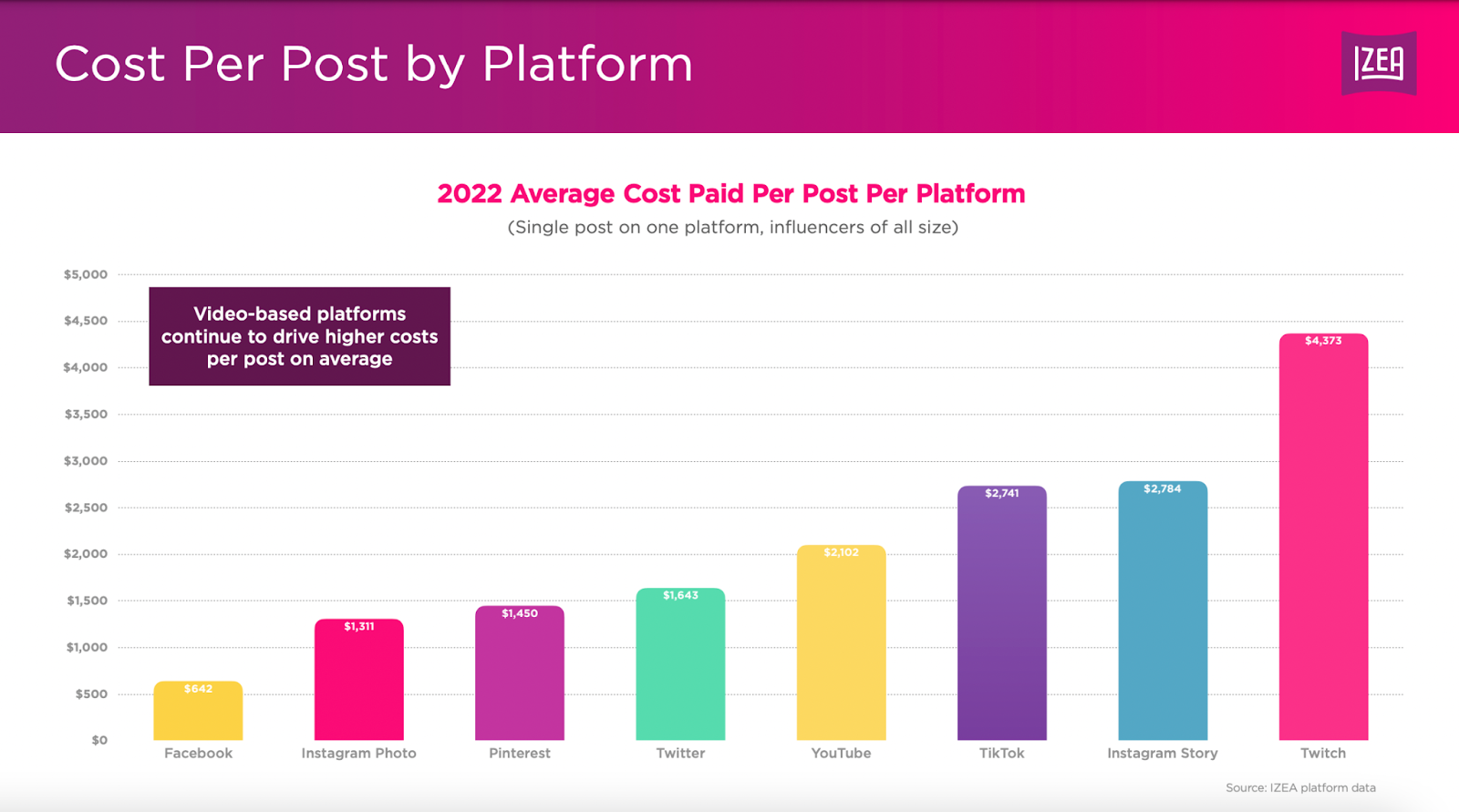Compensation is one of the biggest questions for marketers and influencers alike. Brands struggle to set budgets, while influencers struggle to put a price on their time, content creation skills, and access to their curated audience. Fortunately, IZEA has tracked and analyzed influencer payments since 2015 and has recently released The State of Influencer Earnings.
Can you trade products for social media posts?
For starters, you might wonder if you can send an influencer a free product in exchange for a promotion or a review on Facebook. While it is possible, particularly with small audience influencers, it’s not ideal.
Just 5.7% of Facebook influencers are willing to work for product-only compensation, while 70% prefer a free product and compensation.
Factors that influence compensation
When it comes to campaign payment, costs often vary. What’s behind the sliding scales of payments? There are a handful of factors that can drive costs up, such as:
Audience size
As you might suspect, influencers with mega audiences often charge more. Kim Kardashian, for example, who has 306M followers on Instagram, charges $300,000-$500,000 for one endorsement. While her pay scale is certainly on the high end, it does show a direct correlation between compensation and audience size.
Type of content
Different types of content require different time commitments. A Facebook image is cheaper than a video. A product review is cheaper than an e-book. The more work it takes to create the content, the higher the cost.
Engagement rates
A seasoned influencer will provide engagement rates for everyday traffic and sponsored posts. Influencers with great engagement can charge more. Engagement rates between 2-3% are average, 4-6% are excellent, and anything in the teens is considered viral.
Exclusivity
If you find an influencer that connects with your audience, you may want the influencer to work with your brand exclusively. If that’s the case, an influencer must sign a non-compete agreement and receive compensation that makes up for potential lost income.
How much do Facebook influencers charge?
To get a better handle on how much a Facebook influencer charges, IZEA conducted a study. By analyzing the payments of more than $60M in influencer marketing campaigns across all channels, The State of Influencer Earnings provides an average cost by platform.
The average cost for a sponsored post on Facebook
The chart below shows the average cost for a sponsored post on Facebook is $642 in 2022, about $200 less than influencers charged in 2021.
It has become the most affordable option behind an Instagram Photo. You’ll notice Twitch is the most costly channel for influencer marketing, with content costing $4,373 on average.
When you compare the cost of Facebook endorsements to Twitch endorsements, Twitch is about seven times more expensive than Facebook.
The average cost of a Facebook post and another platform
When a brand commits to an influencer marketing campaign, it makes sense to get as much leverage out of the campaign as possible. As a result, more and more brands want influencers to create content for multiple sites.
The chart below shows the average costs of pairing Facebook with another platform.
Here’s a breakdown of platform combos:
- Blog and Facebook: $1,755
- Facebook and an Instagram Photo: $3,101
- Facebook and an Instagram Story and an Instagram Photo: $3,737
The average cost of a sponsored Facebook post by audience size
Audience size plays a role in campaign costs. To access audience sizes, influencers are broken into groups. The tiers are as follows:
Nano-influencer: 1,000-9,999 followers
Micro-influencer: 10,000-49,999 followers
Mid-tier influencer: 50,000-199,999 followers
Macro-influencer: 200,000-499,999 followers
Mega-influencers: 500,000-999,999 followers
Web celebrities: 1M-plus followers
The State of the Influencer Earnings shows payment across all platforms based on an influencer’s audience tier. Compensation increased for nano-influencers, micro-influencers, and mid-tier influencers but decreased for macro-influencers, mega-influencers, and web celebrities in 2022.
Our data support a shift we’ve seen in influencer marketing. More brands want to work with smaller, more engaged influencers over celebrities.
In 2022, a nano-influencer charged right around $1,105. The next tier up, a micro-influencer, charged around $1,674, while mid-tier influencers charged about $3,500. All of them charged more per post in 2022 than they did the previous year.
Macro-influencers lost a little ground in 2022, charging about $5,000.
Mega-influencers saw the biggest drop, from about $7,000 in 2021 to about $5,500 in 2022.
Web celebrities dropped from $6,500 in 2021 to $5,800 in 2022.
As you can see, compensation for Facebook influencers depends on several factors. However, these benchmarks give you a good starting point for discussing compensation. If you’d like more in-depth statistics on campaign compensation, get The State of Influencer Earnings report today.







